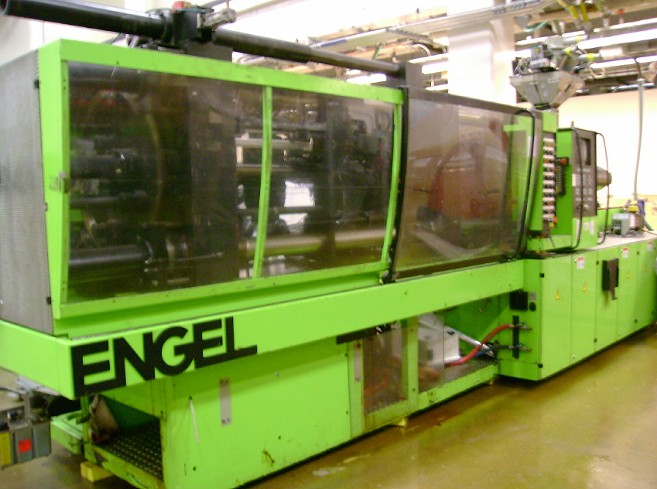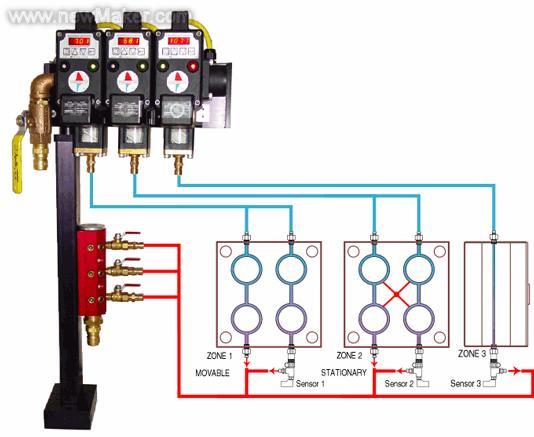缅甸的威胁来自飞毛腿导弹而非核武器
luyued 发布于 2011-05-07 03:47 浏览 N 次
Scud missiles, not nuclear weapons, are threat from Burma
缅甸的威胁来自飞毛腿导弹而非核武器
Thursday, 24 March 2011 17:49 Jim Andrews News - Mizzima News E-mail | Print | PDF
星期四,2011年3月24日17:49吉姆·安德鲁斯新闻- Mizzima
各型飞毛腿中长程弹道导弹
北朝鲜华松导弹
北朝鲜华松导弹
北朝鲜名城华松
北朝鲜华松古城门
清迈(米兹玛-缅甸报道)
缅甸军政府制造飞毛腿弹道导弹计划可能因此打破东南亚地区力量的平衡并引起形成新的军备竞赛,新闻媒体作者和缅甸问题专家白蒂尔-林耐Bertil Lintner警告说,。
白蒂尔-林耐曾对缅甸和北韩问题写过权威性书刊,说:“根据我已经收到的独家信息,缅甸军政府位于伊洛瓦底江西岸的马圭省明布市南部的小城明拉附近的的2个主要缅甸军火工厂正在参与生产精良的飞毛腿导弹
白蒂尔-林耐刚刚在香港媒体网站‘亚洲及太平洋地区媒体服务’发表了一篇关于他发现‘北朝鲜的专家技术人员在协助缅甸军政府此一极端机密军事项目。
‘飞毛腿导弹’是系列战术弹道导弹,冷战时期首先在苏联进行开发。20多年前,北朝鲜进一步将其列为主要配置武器名录,最先从埃及引进,然后自主生产,并以北朝鲜古城‘华松’命名,出口到伊朗和叙利亚。当前华松Hwasong-6导弹覆盖范围700公里,有效载800公斤,使其成为一个地区冲突高效的中程导弹武器。
白蒂尔-林耐警告说:‘有‘华松’中程导弹武装的缅甸军政府,其性能将比不具同类远程导弹的东南亚邻国略胜一筹,可能会引发区域军备竞赛,促使邻国泰国等国开发自己的导弹库。
白蒂尔-林耐说:‘应当更重视缅甸军政府的导弹计划,超过关注缅甸计画成为一个核国家,核计划是一个白日梦,不太可能在不久的将来实现物质化,应当严肃地对待缅甸军政府的导弹计划。’
据报道白蒂尔-林耐说:‘缅甸军政府的导弹计划,在2010年首次由维基泄密披露,驻在仰光的美国大使馆2004年8月27日发给华盛顿的电报中提到。
该消息来源告诉美国大使馆声称‘朝鲜工人在马圭省装配地对空导弹,加固的地下设施在兴建。项目使用的钢筋的直径大于工厂需要”。
工厂建设在地下建筑,从空中难以确定,白蒂尔-林耐说两个工厂是“现在开发比较现在缅军现役使用的更先进的武器,包括‘飞毛腿导弹’导弹”。
白蒂尔-林耐说“现在清楚这个军事工厂地点位于明拉附近贡吉村,1993年开始建设,到最近建成,称为KBS-10。
据报道,“现场占地6000英亩(2,428公顷),据一位知情人士曾在该设施工作,该计划的目标是生产地对空,地对地导弹、空对空导弹。缅甸军工总局-被称为GG3负责管理此一项目。
明拉镇的第二个军工厂占地超过10万亩,白蒂尔-林耐补充说:消息来源告诉他,‘这个老工厂雇用900名工程师和其他军事人员,生产60毫米、81毫米、120毫米迫击炮,105mm大炮'。
该消息来源告诉白蒂尔-林耐,此一工厂还包括一个巨大的复杂重型武器实验场,包括大炮和火箭测试:“根据消息来源说,新加坡作为一个小岛屿国家,没有足够的空间来进行这样的测试,支付费用建设此一实验场,作为新加坡的武器实验测试场。”
白蒂尔-林耐称:迄今为止的没有报告表明明拉的2个军工厂参与所谓的‘新齐、秘密、充满争论的’核项目。缅甸军政府核子科技研发项目位于巴谷古市北面的棉恩,也属于马圭省,远离明拉军工厂。
尽管如此,北韩参加GBS-2项目可能会导致国际社会关注。
附件:
北朝鲜‘华松Hwasong-6型’导弹
Hwasong-6型导弹是朝鲜在1969年从前苏联引进了射程为60公里的蛙5战术弹道导弹和蛙7导弹,1976年从埃及引进了飞毛腿B型导弹,并开始以飞毛腿B为基础自行研制本国的弹道导弹。从1988年起,朝鲜实施了Hwasong-6型导弹研制计划,也称飞毛腿C或飞毛腿PIP计划(PIP是英文“产品改进计划”的缩写)。朝鲜的飞毛腿C型导弹采用液体推进剂,通过加长飞毛腿B导弹弹体长度,使液体推进剂增加了25%,同时将弹头重量由原来的1000公斤减到700~800公斤,从而使射程由原来的300公里增加到500公里。1989年朝鲜开始部署这一型号的导弹。据估计朝鲜目前仍在生产这种导弹,生产能力为4~8枚/月,并向伊朗和叙利亚等国家出口。
Scud missiles, not nuclear weapons, are threat from Burma, expert says
Thursday, 24 March 2011 17:49 Jim Andrews News - Mizzima News
Chiang Mai (Mizzima) - Burma’s reported program to manufacture Scud-type ballistic missiles could tilt the balance of power in Southeast Asia and provoke a regional arms race, warns author and Burma expert Bertil Lintner.
Lintner, who has written authoritative books on Burma and North Korea, said: ‘According to exclusive information I have received, one of two major Burmese munitions factories located near the small town of Minhla, on the west bank of the Irrawaddy River, south of Minbu in Magway Division, is involved in the production of sophisticated Scud-type missiles’.
Lintner, who has just published a paper on his findings on the Hong Kong-based media website, Asia Pacific Media Services, told Mizzima that North Korean experts are reportedly assisting Burma’s military technicians in the top-secret project.
Scud missiles, a series of tactical ballistic missiles, were first developed by the Soviet Union during the Cold War. North Korea added Scud missiles to its arsenal more than 20 years ago, buying a series of the tactical weapons from Egypt. Later it produced its own, naming them Hwasong, and exported them to Iran and Syria. The current Hwasong-6 has a range of 700 kms with a payload of 800 kg, making it a highly effective medium-range weapon in regional conflicts.
Lintner warned: ‘A Scud-armed Burma would place its capabilities a significant notch above its Southeast Asian neighbors, which do not possess such long-range missiles, [and] could spark a regional arms race, prompting neighbouring countries such as Thailand to develop or procure their own missile arsenal’.
Lintner said reports of Burma’s missile program should be taken even more seriously than assertions that Naypyidaw is aiming to become a nuclear power, which he described as a ‘pipedream, unlikely to materialize within the foreseeable future, or ever…Burma’s program to develop Scud-type missiles should be taken more seriously’.
Lintner said reports of the missile program first surfaced in 2010 in a WikiLeaks disclosure of the text of a cable sent to Washington by the US Embassy in Rangoon on August 27, 2004.
One of the US Embassy’s sources claimed that North Korean workers were assembling surface-to-air missiles at ‘a military site in Magway Division’ where a ‘concrete-reinforced underground facility’ was also under construction. The source told the embassy that ‘he had seen a large barge carrying a reinforced steel bar of a diameter that suggested a project larger than a factory’.
The construction of the armaments factory partially underground made its purpose difficult to identify from the air, said Lintner—adding that his sources report the two factories are ‘now churning out more advanced weapons, including Scud-type missiles, than the country has to date’.
Lintner said it is ‘now clear that the site referred to in the embassy cable is Ka Pa Sa 10, situated near Konegyi village in Minhla Township. Construction of the site began in 1993, but has only recently been completed.
‘The site reportedly covers 6,000 acres (2,428 hectares) and, according to a source who used to work at the facility, the aim is to produce surface-to-air, surface-to-surface and air-to-air missiles.
‘The North Koreans working at the site reportedly first entered Burma discreetly by road from China. They were met at the border and then brought to Minhla by officers from Burma’s Defense Production Directorate, known as ka ka htone, according to the source’.
Between 600 and 900 army technicians and other military personnel are currently based at Ka Pa Sa 10, said Lintner. ‘Initially Russian and Chinese technicians also took part in the facility’s construction, but they appear to have since left and been replaced with North Korean experts’.
The second Minhla Township armaments factory is spread over 100,000 acres near Malun village, Lintner said, adding his source told him that ‘the somewhat older factory employs 900 engineers and other military personnel and produces 60mm, 81mm and 120mm mortars and 105mm artillery pieces’.
The source told Lintner that the complex also includes a huge firing range where heavy weapons, including artillery and rockets, are tested: ‘According to the source, Singapore, as a small island country which does not have enough space for such testing, paid for the construction of the firing range. Weapons are also brought from Singapore and tested at the site.’
Lintner said that so far ‘there are no reports to suggest that Minhla’s two Ka Pa Sa facilities are involved in Burma’s nascent, clandestine and highly debatable nuclear program. Nuclear research is reportedly carried out at Myaing to the north of Pakokku, which is also in Magwe (or Magway) Division but far from the Minhla facilities.
Still, North Korean involvement in Ka Pa Sa 2 may be cause for international concern—even for Burma’s traditional military partner, China. Following the massive shipments in the 1990s and early 2000s, it appears that Chinese deliveries of military equipment have waned significantly’, Lintner said.
- 06-21· 爱可视605WIFI暑促!购机还送
- 06-21· 疯狂降价1200元爱可视404
- 06-11· Ellen呼吁粉丝协力阻止捕杀
- 06-11· 【引用】『八卦』未来英
- 06-10· 升级Android 2.2!爱可视101评
- 06-10· 爱可视环球首发5款Androi
- 06-09· 台湾母子3人因贫病交迫中
- 06-09· Genetically modified tobacco co
- 06-09· 英国《独立报》:中国女演
- 06-09· Rascal Flatts - Summer Nights (
- 06-09· 收音机厂商(22)
- 06-08· 问板终极贴【2009年6月20日
- 06-08· 爱可视平板电脑新品 让你
- 06-08· 升级Android2.2!爱可视101平板
- 06-08· 法国爱可视推出限量版上
- 06-08· 高清之王爱可视AV530仅售
- 06-08· ARCHOS-605 爱可视--30GB-触摸
- 06-08· [转载]【原创】爱可视10
- 06-07· c++标准库中endl的实现(转
- 06-07· 单指令多数据的程序优化




![[原创]爱可视,因你而精彩](http://www.okpinpai.net/uploads/userup/3/142199037279.jpg)





